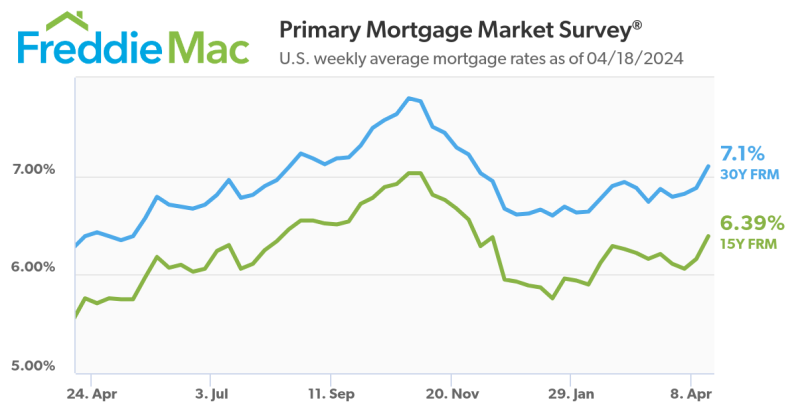Advertisement
Idaho industry appointments update - 11/13/2006
The commercial corner: Determining debt-service coverageMike Boggianodebt-service coverage, small commercial loans
The Mortgage Press is pleased to present "The Commercial
Corner," a monthly column by Mike Boggiano of Silver Hill Financial
LLC, dedicated to answering your questions about the commercial
mortgage marketplace. If you have a question that you would like
answered in a future installment of "The Commercial Corner," please
e-mail [email protected].
Perhaps the biggest difference between residential and
commercial lending is the underwriting used to determine loan
financing. Everyone is familiar with the debt-to-income (DTI)
approach used for residential mortgages. Many brokers new to
commercial lending, however, are not familiar with the commercial
method that looks at the property's debt service. Knowing how it's
calculated can help you feel more comfortable working with
commercial deals.
Q: How different is commercial underwriting?
A: You might think of it this way. Residential
underwriting focuses on the borrower's ability and willingness to
repay the loan, while traditional commercial underwriting examines
the property's ability to repay the loan. Fundamentally, these are
very different methods, and commercial transactions are certainly
more complex than residential mortgages. Most traditional
commercial lending programs focus on underwriting only the subject
property, using the conventional debt-service coverage ratio
(DSCR). With this type of commercial loan, individualized deals and
a non-standardized process are common. Lead times are noticeably
longer than residential transactions (varying widely, from 90 to
even 180 days in some cases), with more stringent appraisals and
documentation requirements. In addition, borrowers are often
subject to the whims of credit committees that determine whether
the loan will pass.
Q: Can you tell me how to determine debt-service
coverage?
A: DSCR is calculated by taking the underlying property's
net operating income (NOI), which is gross monthly rents minus
monthly operating expenses, and dividing by the debt service (the
subject property's monthly mortgage payment, including principal
and interest). This calculation shows the property's ability to
repay the loan. Generally, traditional lending institutions look
for a property to generate at least $1.20 in NOI, or cash flow, for
every $1 of the proposed mortgage debt, or debt service/payment. If
the ratio falls short, they most often will pass on the loan. Keep
in mind that the target number may vary by lender. The higher the
ratio is, the greater the perceived likelihood that the loan will
be repaid will be. The property must generate more than enough
income to pay the mortgage, insurance, taxes, maintenance and
operating expenses incurred.
Q: Another term I've heard is "cap rate." What is
it?
A: "Cap rate" is short for "capitalization rate," and it
is the ratio used to convert a single year's NOI to an indication
of value. This is generally extracted from the market by getting
the NOI from recent transactions and dividing by their respective
sales prices. Put another way, the cap rate is an indicator of
value in a given market - the demand for a particular real estate
product. When property values are high, cap rates are low. The two
values are inversely proportionate. While NOI is constant with a
commercial property, the variable that affects property value is
the cap rate (the market's required return). For example, a
property generating NOI of $100,000 at a 10 percent cap rate would
be worth $1 million. In a hotter real estate market where similar
properties are trading at an eight percent cap rate, however, the
same property would value at $1.25 million. This example
illustrates that a seemingly small adjustment in cap rate can have
a major impact on value. A half-percent difference would alter the
value by nearly $50,000.
In markets where real estate values are on the rise or
characteristically high, it is very difficult for properties to
generate enough cash flow to support a higher loan-to-value (LTV).
The higher the LTV is, the higher the debt load will be and the
harder it will be for rents generated to carry a high mortgage
payment plus related property expenses. However, the same scenario
under a debt-to-income analysis (see next question) may yield an
approved deal based on the borrower's DTI ratio, even allowing for
90 percent LTV in some casessomething generally impossible when
relying on the property's debt service.
Q: Is there any way to get around debt service on small
commercial loans? What if the borrower has really good
credit?
A: Until a few years ago, even borrowers with great credit
were fairly limited in terms of options. However, with the
introduction of residential-style underwriting being applied to
small commercial loans, borrowers have an alternative to bank
financing that is ideal for small-balance loans. In other words,
programs that focus on the borrower's personal financial strength
rather than just that of the property are available in the
marketplace. Working with such a program, brokers are able to
attract borrowers that previously may not have known how to obtain
a commercial loan. Small-business owners, professionals with their
own practices and first-time and seasoned investors find the
DTI-style commercial loan an attractive option. This type of
program avoids the large-balance mentality that many traditional
lenders have toward any size commercial deal and speeds the process
by taking a more commonsense approach to financing, environmental
issues and other areas of the transaction. Be aware, however, that
even those offering small-balance products may still utilize
conventional commercial methods.
Mike Boggiano is senior vice president, national sales
manager for Silver Hill Financial LLC. He may be reached by phone
at (877) 676-1562 or e-mail [email protected].
About the author





